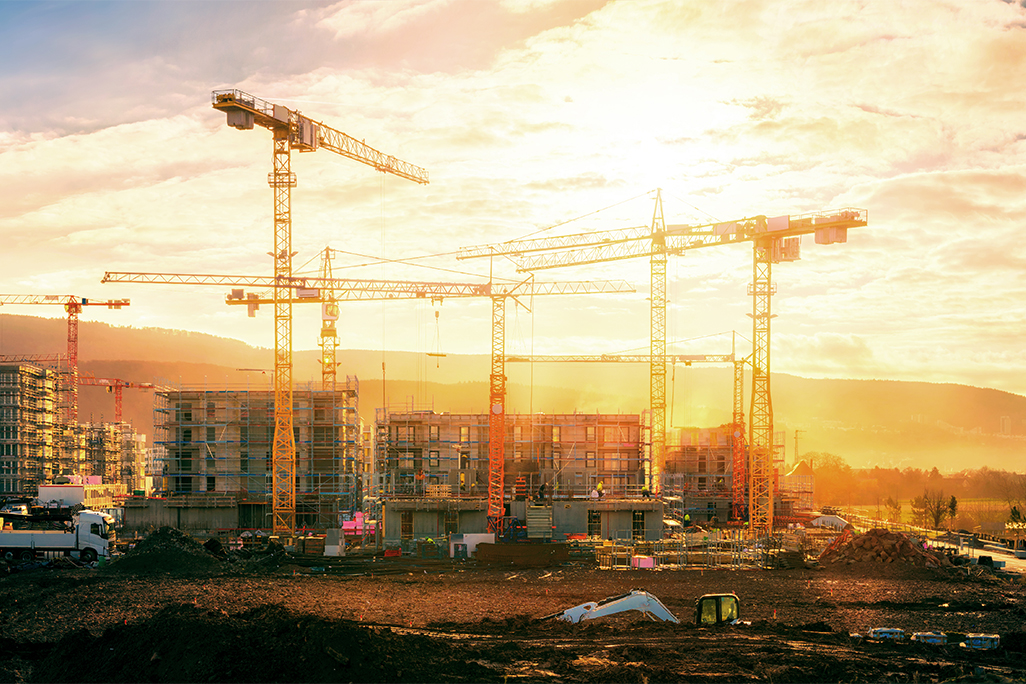The Building Safety Act 2022: what building owners and developers need to know
Published on 16th May 2022
The bill has received Royal Assent but many provisions require secondary legislation and are not set to come into force for 12 to 18 months

The fiercely debated Building Safety Bill has become law but in a form quite different to the version introduced to Parliament in July 2021. Although there are many questions still to answer and more guidance needed on timescales for compliance, the Building Safety Act has brought an element of certainty – and building owners and developers will need to familiarise themselves with what it requires.
Who and what does it apply to?
The Act applies to building owners and the built environment industry, including those who commission building work and participate in the design and construction process, such as clients, designers and contractors.
The focus of the Act is on high-risk buildings (HRB), which are defined as high-rise residential buildings (including student accommodation), hospitals and care homes that are at least 18 metres or seven storeys high. However, certain provisions relating to the remediation of relevant defects focus on self-contained buildings, in England that contain at least two dwellings and are at least 11 metres high, or has at least five storeys.
The Act requires those responsible to evidence, in particular, fire safety measures, as well as the structural safety of the building and associated inspections and maintenance. Powers within the Act will be used to make regulations that place duties on those who procure, plan, manage and undertake building work. These regulations will be made using secondary legislation and are subject to further consultation.
The legislation will directly affect all those with an interest in existing and future HRBs and is likely to significantly influence standards and expectations in all multi-residential buildings.
Building safety measures
The lifecycle of a building will be split into "gateways" (planning and design, construction and occupation) and the building owner must demonstrate that safety has been considered at each and every stage of a building’s construction – and safety risks are considered at the earliest stage of the planning process. Compliance will be monitored by the newly established Building Safety Regulator (BSR) at each of these gateways. The BSR has significant powers to require provision of documents and to stop works.
- Duty-holder regime. The Act creates a new duty-holder regime to be incorporated across the lifecycle of HRBs. This is based on the principle that the person or entity that creates a building safety risk should, as far as possible, be responsible for managing that risk. Many aspects of the regime will be taken forward through secondary legislation.
- Golden thread. Central to evidencing compliance will be the collation and management of a "golden thread" of information that is updated through the lifecycle of the building. This will need to be much more detailed and accessible than is the case for most buildings presently. Having accurate information about a building's construction and its passive and active fire-safety measures will be fundamental to achieving compliance. It will not only be the BSR that accesses this data but also residents, contractors and emergency services.
- Other provisions. The Act also includes other provisions in relation to the regulation of all construction products on the UK market and the concept of a “safety critical product”, improving the competence of architects, and the New Homes Ombudsman scheme.
Most of the provisions in the Act are expected to take effect in 12-18 months’ time, and will be supported by detailed regulations and guidance which are yet to be published
Funding challenges
One of the most challenging issues for the government has been working out the most equitable way of paying for remedial works – particularly those that extend beyond cladding – and building safety measures going forwards. The Act, along with other measures announced by the government in recent years, aims to provide a menu of potential options for funding, described as a "waterfall" or "cascade", with building owners having to exhaust an option before they can move onto the next.
The principle options for funding remediation works now consist of:
- Developers and product manufacturers. Where the original developer is identifiable, pledges need to be secured from the industry to undertake the necessary remedial works or, at the very least, fund the works. The Act brings in the prospect of Remediation Orders for those that fail to contribute.
- Landlords and building owners. This will be subject to affordability, unless they are responsible for the defect or associated with the responsible party.
- The Building Safety Fund. Taxpayer assistance is available for cladding replacement works that would otherwise fall to the leaseholders. Landlords are now precluded from passing cladding related costs (including profession fees and legal costs associated with the works) down to leaseholders.
- Capped leaseholder contribution. Leaseholders will not be asked to contribute more than £10,000 out of London and £15,000 in London (save where the value of the premises exceeds certain thresholds) towards the cost of non-cladding related remedial works and there are restrictions on certain associated costs from being passed down at all. The new rules also include annual service charge limits to help spread the costs and the consultation requirements have been amended to oblige landlords to exhaust other avenues of funding before looking to leaseholders.
However, the big question remains: what happens if the options above have been exhausted and there still isn’t sufficient funding to carry out the works or if the building has been enfranchised?
In terms of meeting future building-safety requirements, the controversial Building Safety Charge did not survive the final rounds of amendments. However, certain terms will be implied into relevant leases to ensure that future building-safety works are carried out by landlords and that they are not deterred by defective lease drafting that would otherwise leave them unable to pass on the costs via the service charge. In reality, leaseholders may inevitably see their service charges increase even without the requirement for a building safety manager.
Original developer liability
The Act increases the limitation period applicable under the Defective Premises Act. The critical obligation under the Defective Premises Act is, and always has been, that parties who undertake any work on a dwelling (or any building containing a dwelling, such as a block of flats) whether that work is to the common parts of the building or a private area, will be required to ensure the dwelling is fit for habitation when that work is completed (with respect to that work). If they do not do this, freeholders and leaseholders (including their successors in title) will be able to bring claims for damages.
The Act amends the limitation period for these claims so that a developer responsible for the provision of a dwelling will be liable for a period of 15 years (increased from six years) from completion of the construction of the dwelling. The Act also imposes a 30-year limitation period applying retrospectively (that is, for developments completed before the Act came into force). These changes will take effect as of 28 June 2022.
The Act also gives private individuals the power to bring a claim where they suffer harm because work on a dwelling or building has not met Building Regulations standards (including damages arising from death or personal injury). This will be achieved by bringing section 38 of the Building Act 1984 into force and claimants will have a period of 15 years within which to bring a claim. Section 38 of the Building Act deals with physical damage to people and property, not purely financial loss. Purely financial loss could be claimed in respect of breaches of the Defective Premises Act though (that is, breaches rendering a dwelling unfit for habitation).
Osborne Clarke comment
The passing of the Act is very much the first step on the long journey of building safety reform. There will be significant amounts of secondary legislation to be passed in order to flesh out the framework set by the Act and confirm the timetable for compliance. The Act provides for the housing minister to expand the HRB category, and the expectation is that other types of accommodation and buildings below 18 metres will, in time, also have to meet these more stringent requirements.
The increased scrutiny at each stage of the building process and also being applied to existing HRBs in occupation will result in delays and costs if the evidence of compliance cannot be demonstrated. It is essential that owners know their buildings, so that the required information can effectively be presented to the BSR; trying to obtain documents under pressure to answer queries from the BSR will delay projects and, ultimately, if the BSR considers that there has been non-compliance, may stop them altogether. The process of digitally documenting information about all safety aspects of buildings that are under the control of owners should be being established now so that they are ready to respond to the BSR.
In terms of funding, the aim all along has been to protect leaseholders and share the burden of funding remedial works across as many parties as possible, where the original developer is no longer an option. However, the Act fails to deal with the problems facing leaseholder-owned buildings and the practical application to commonhold, which the government is hoping to promote, remains unclear.
Getting the Act to this stage has been no mean feat. However, the reality of pursuing third parties and getting hold of funds in a timely manner may prove to be the greater challenge. We are likely to see an influx in tribunal cases as the Act and secondary legislation bed into the system.
For further coverage of issues surrounding the legislation, please visit our Building Safety Act pages.




